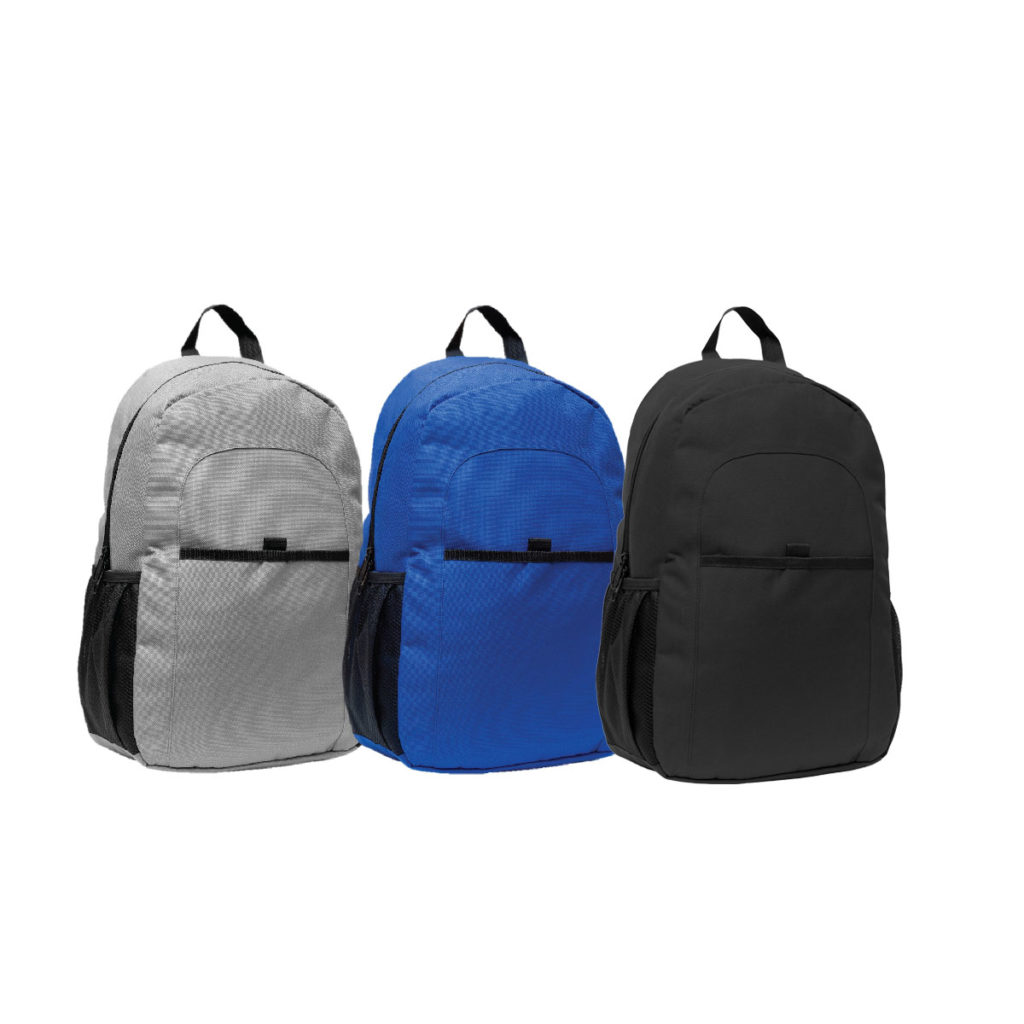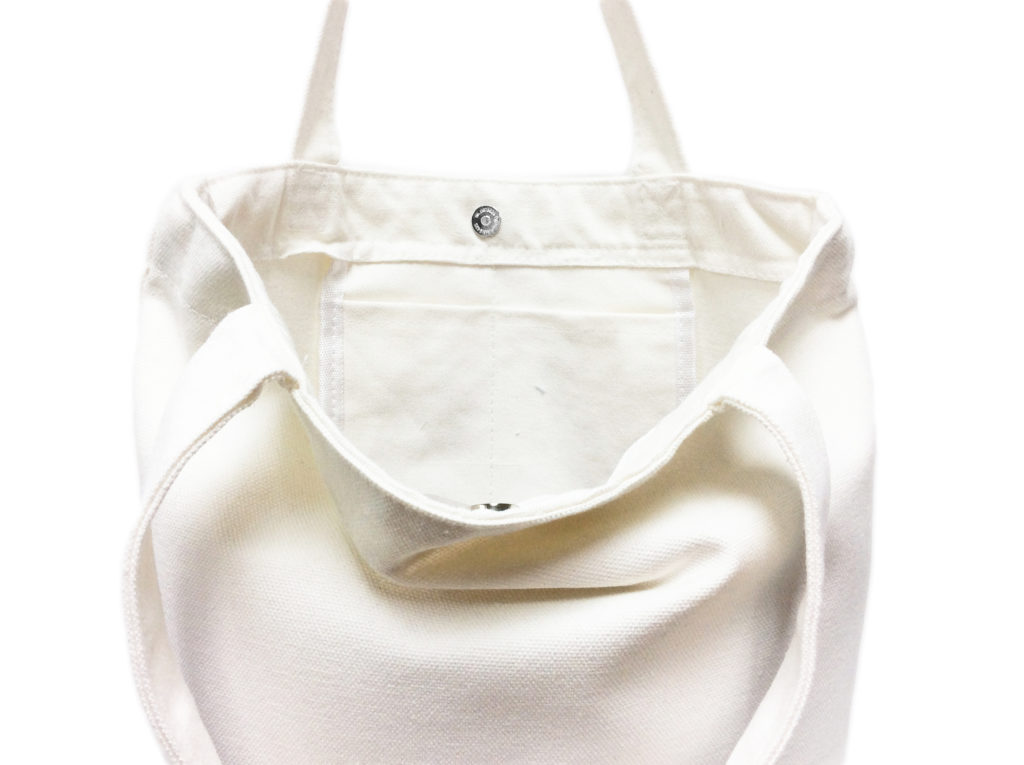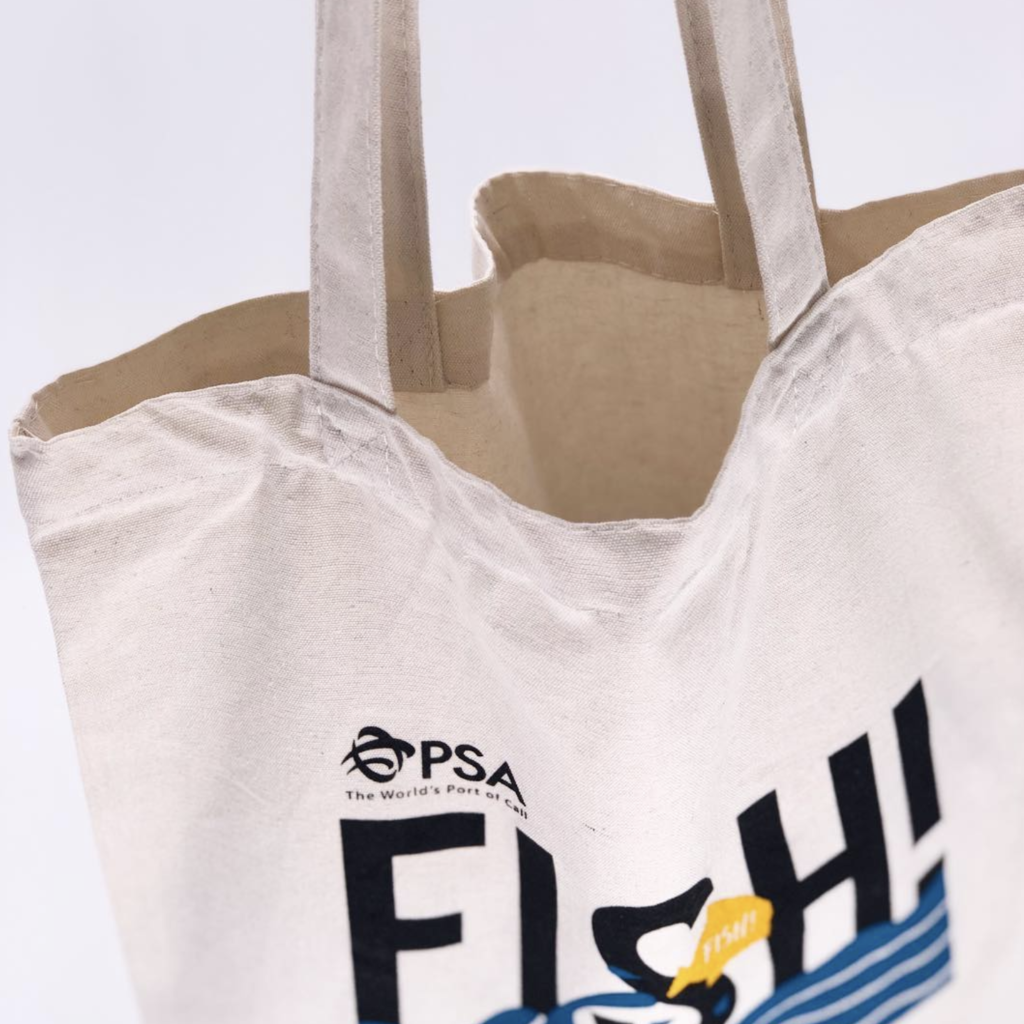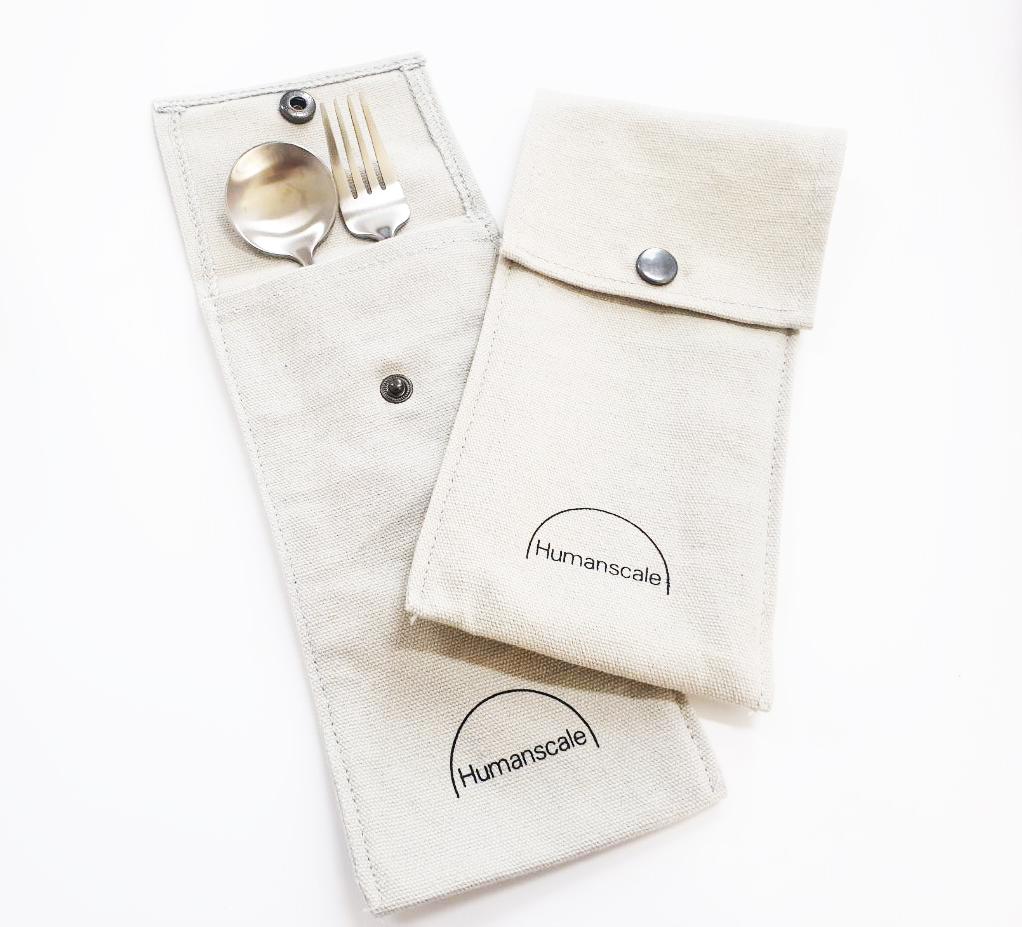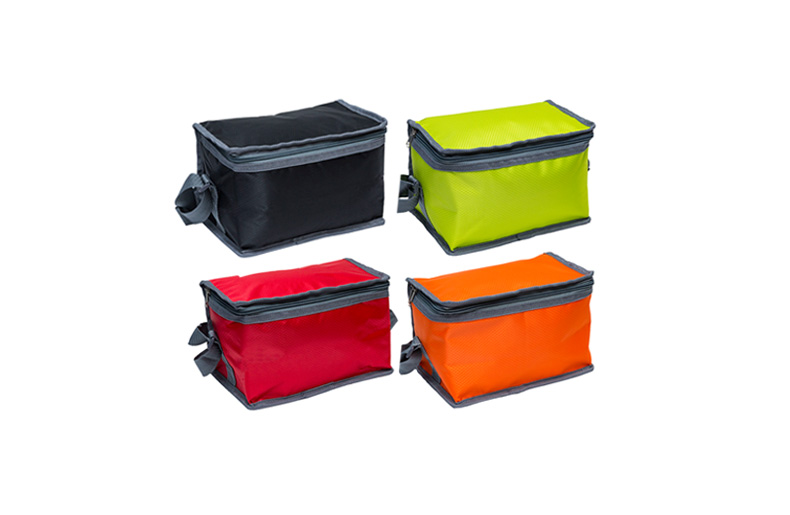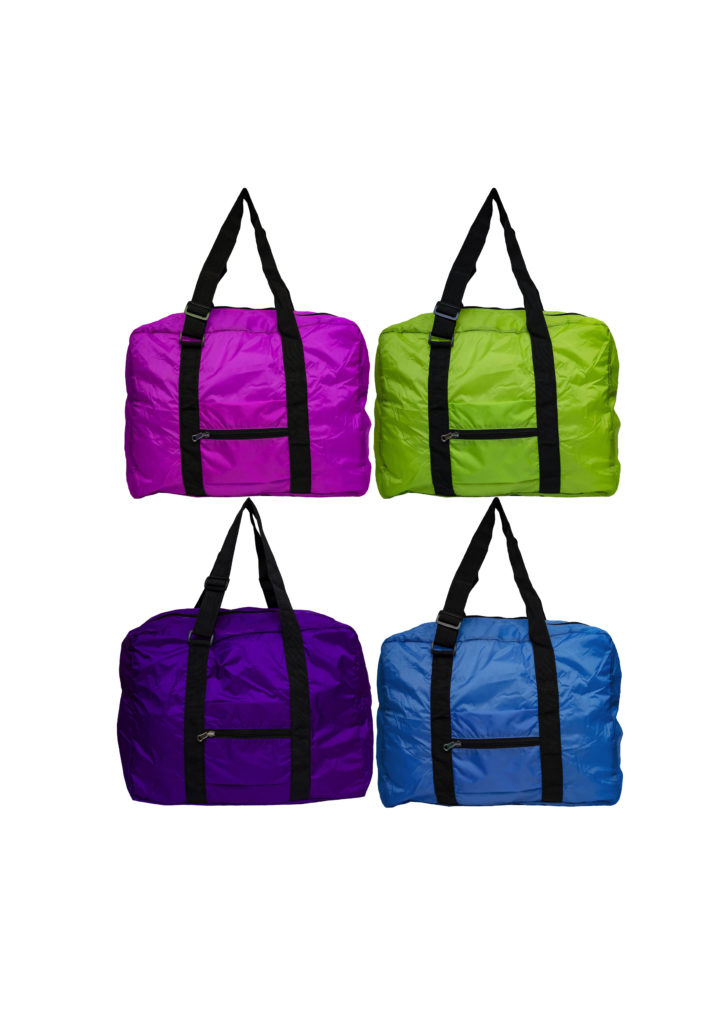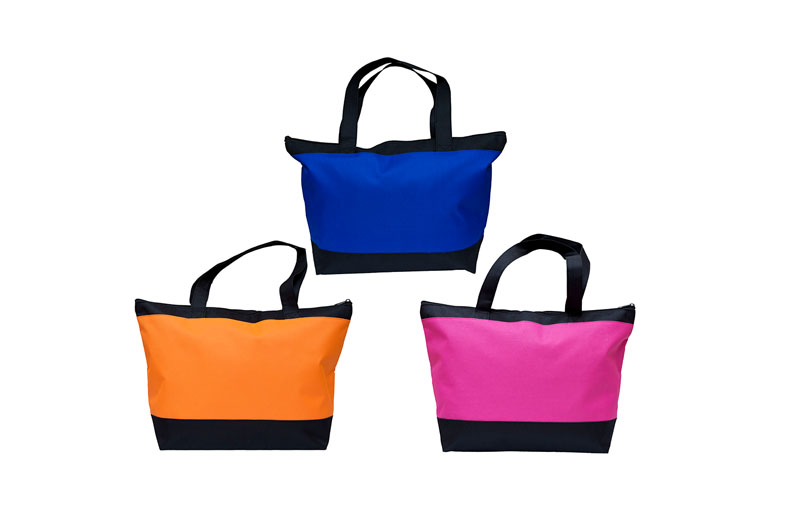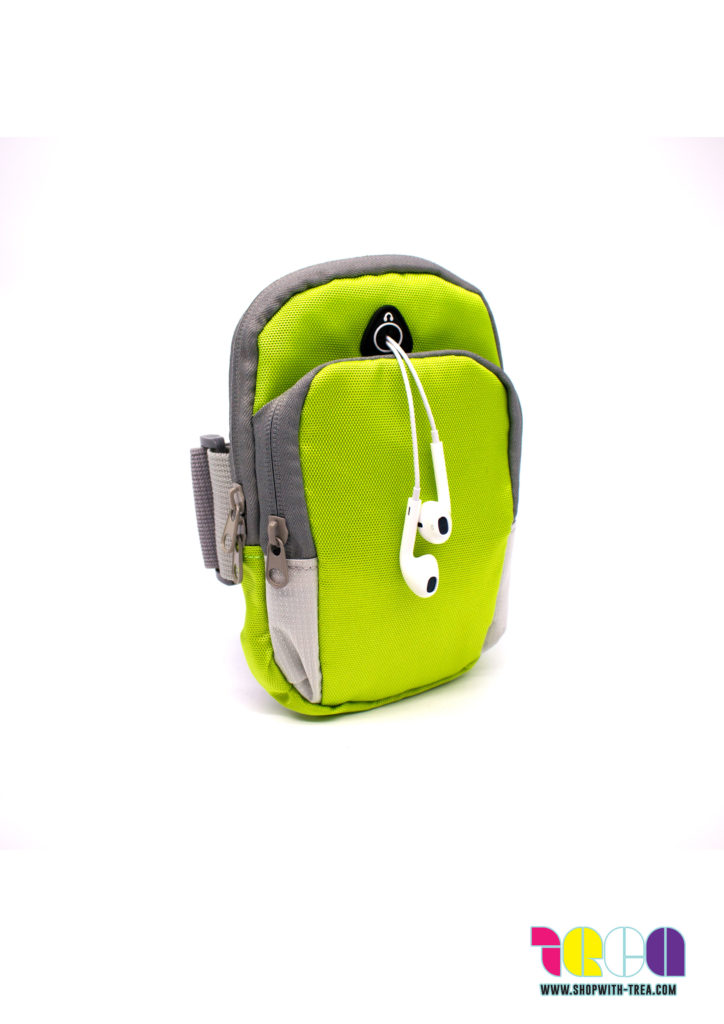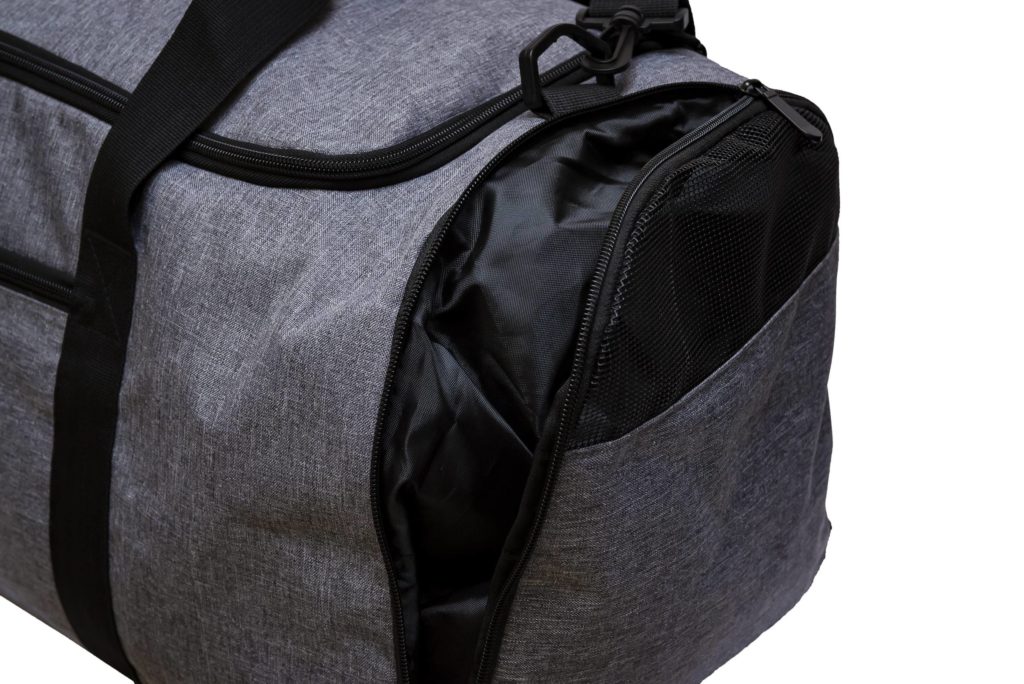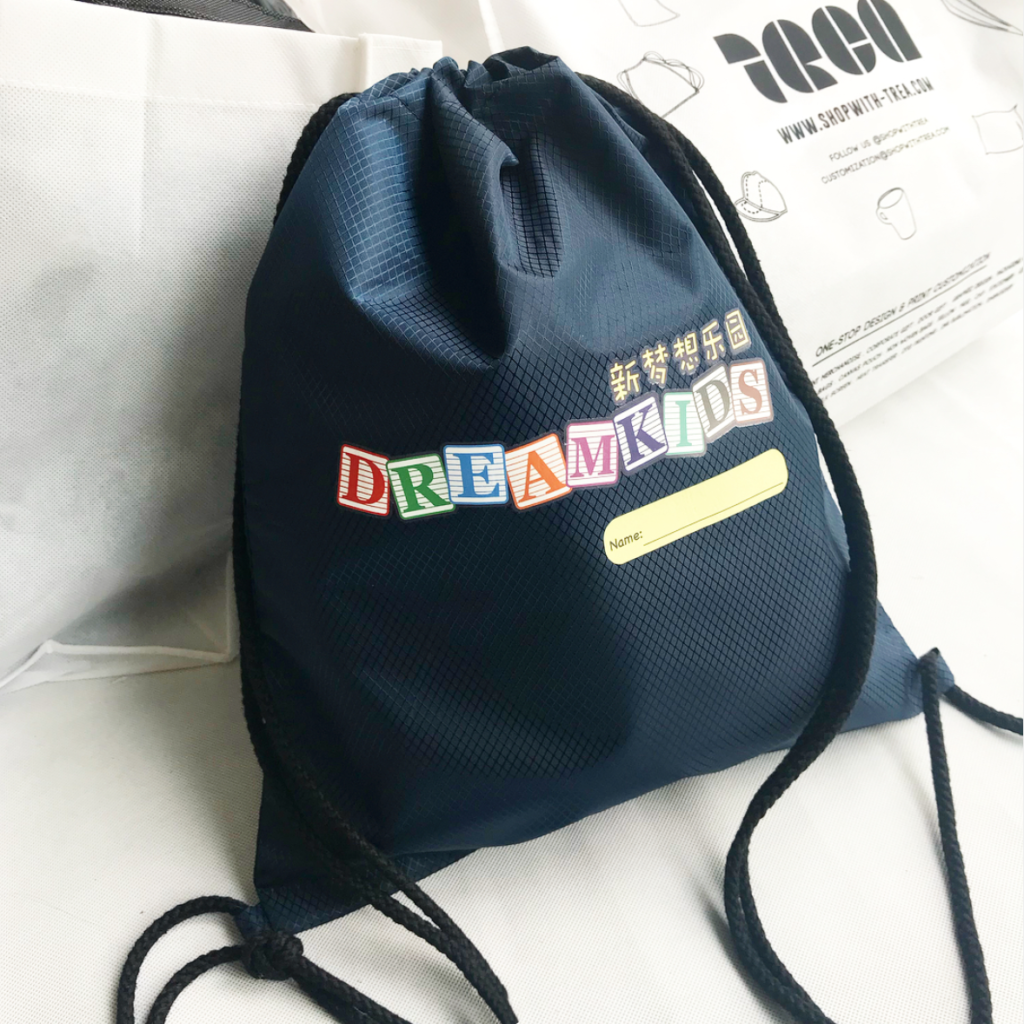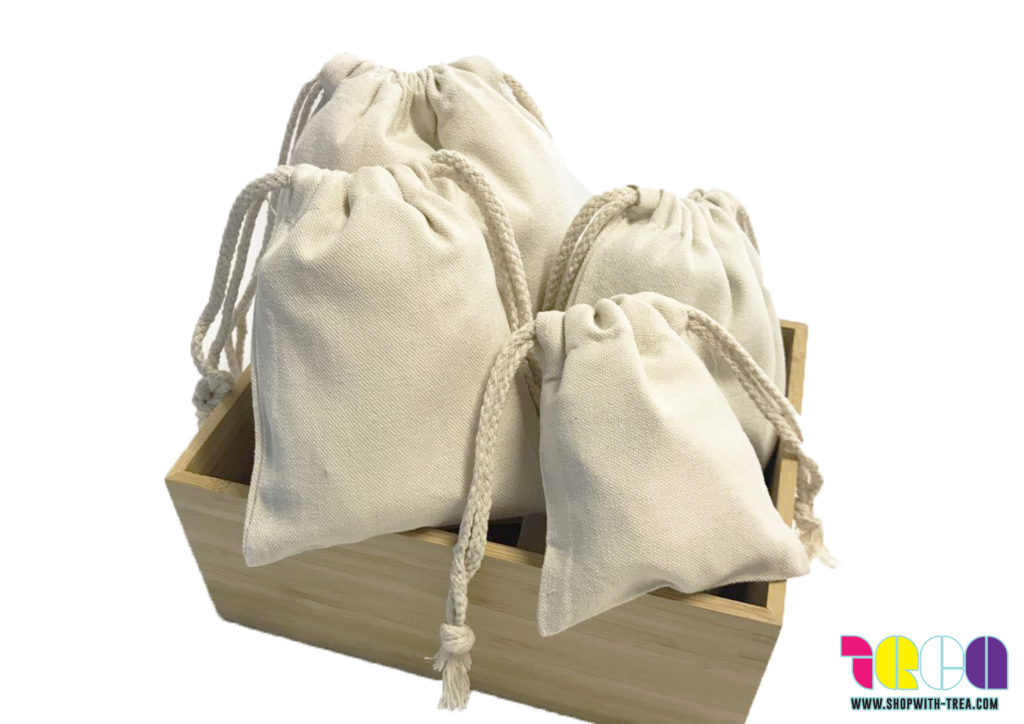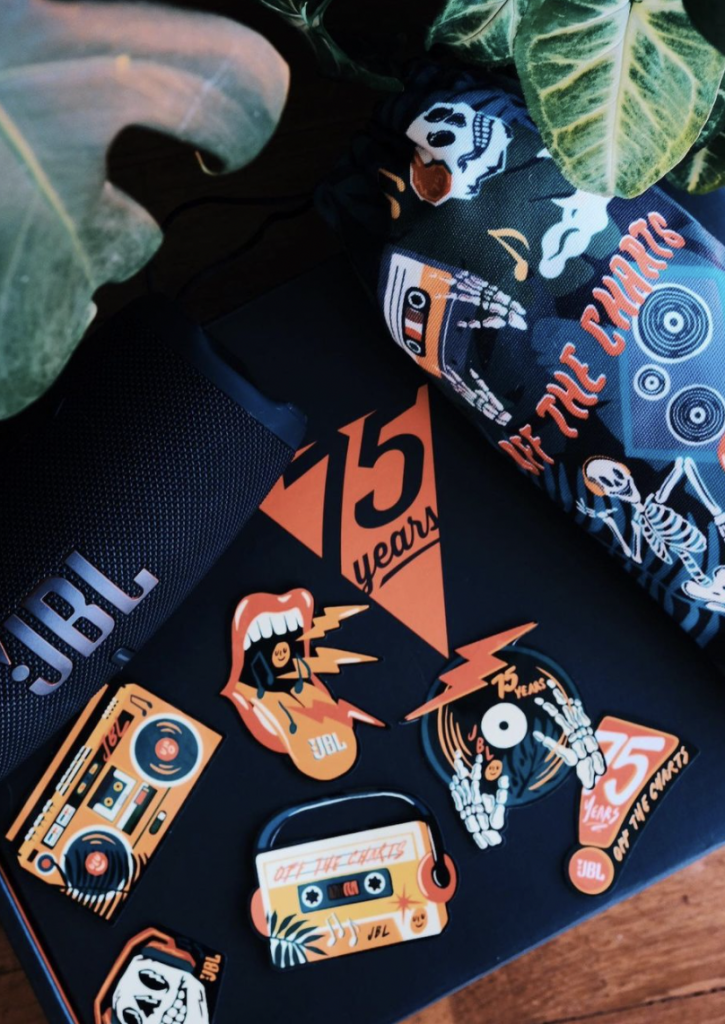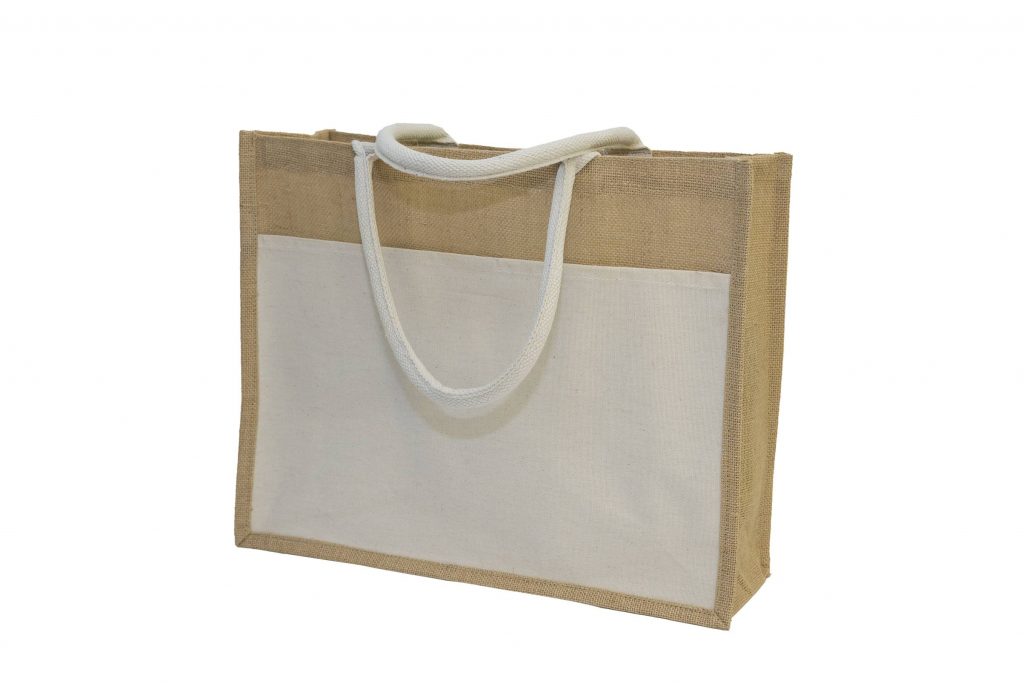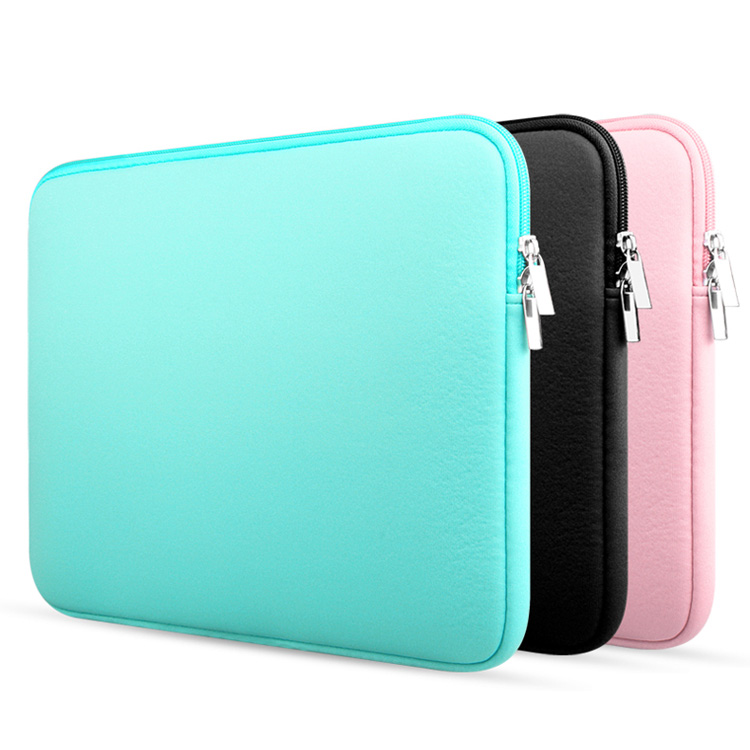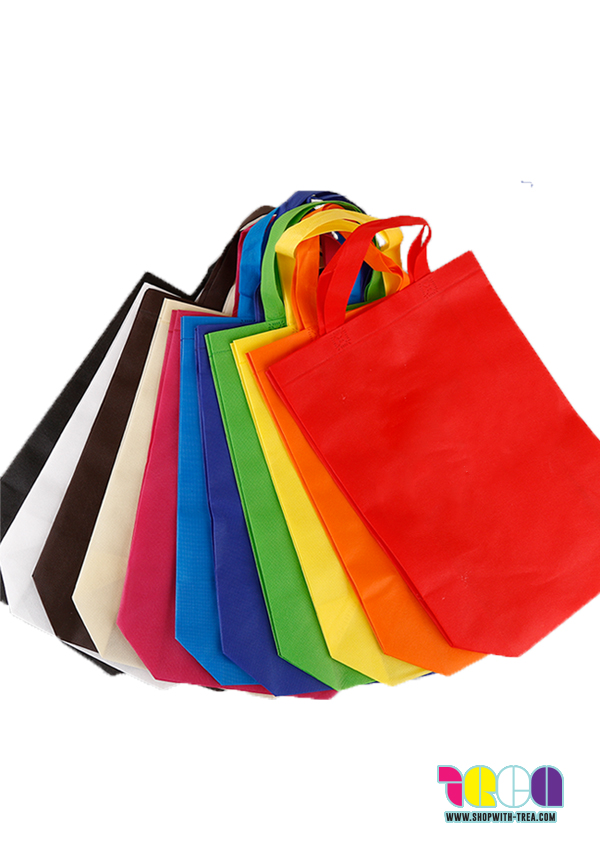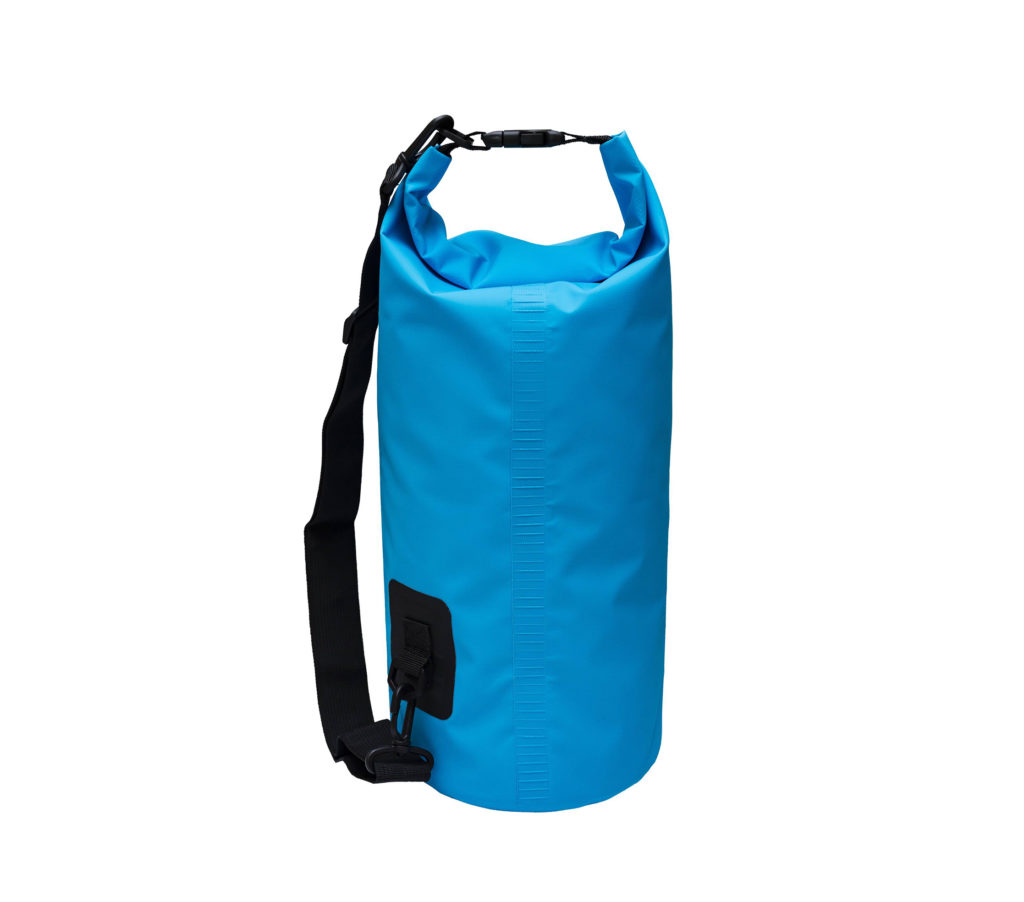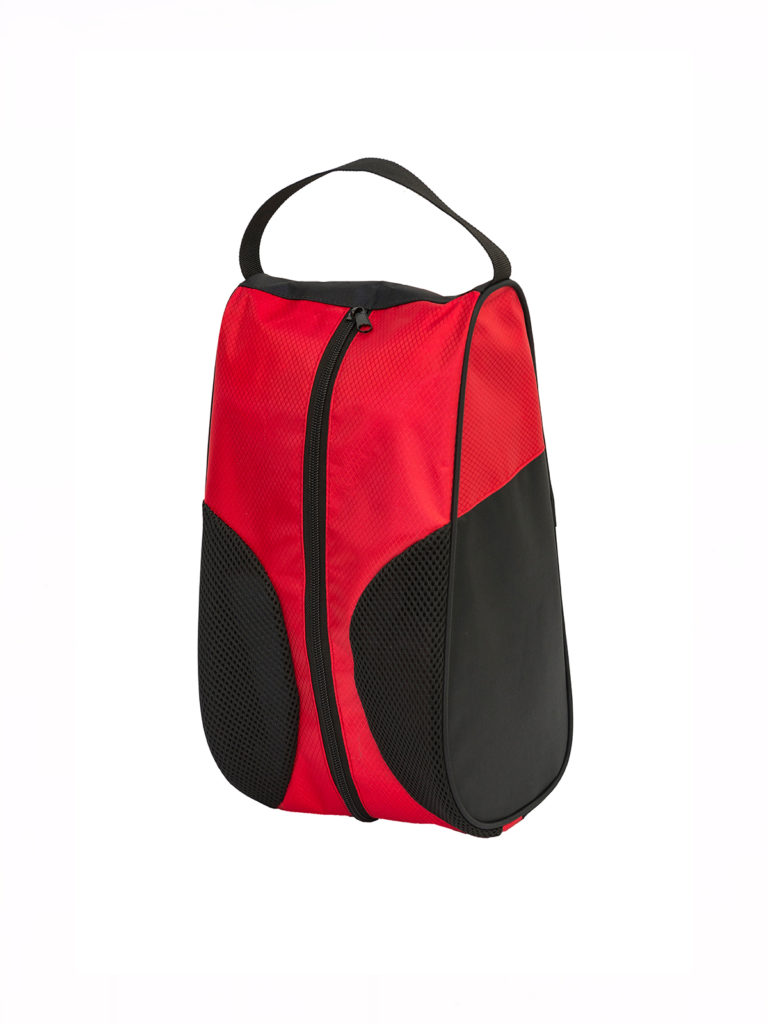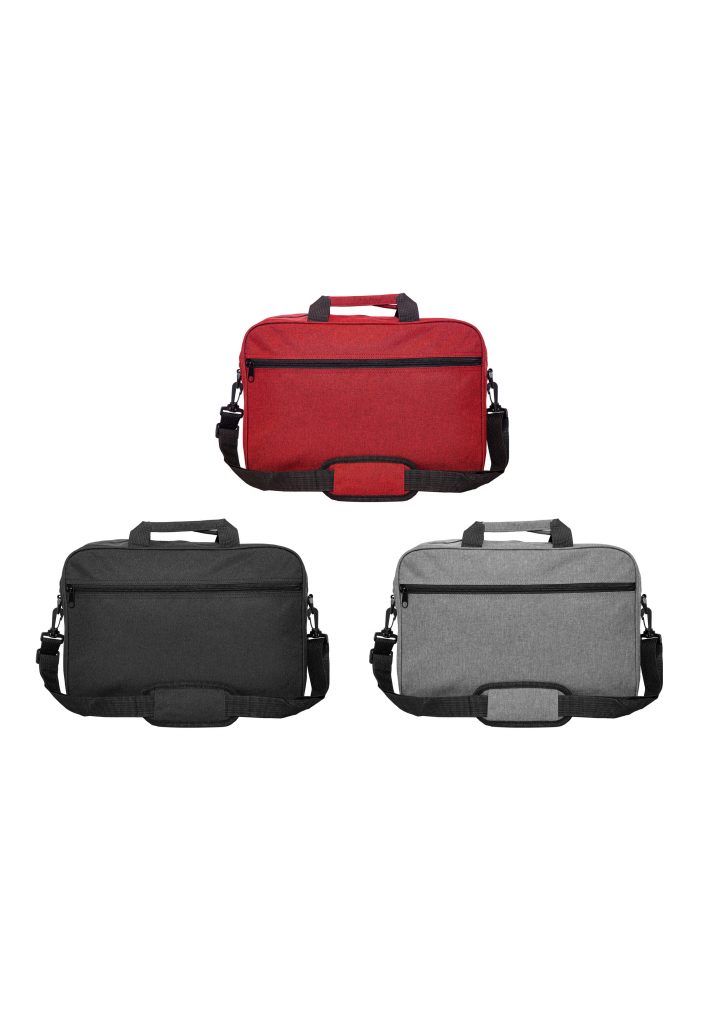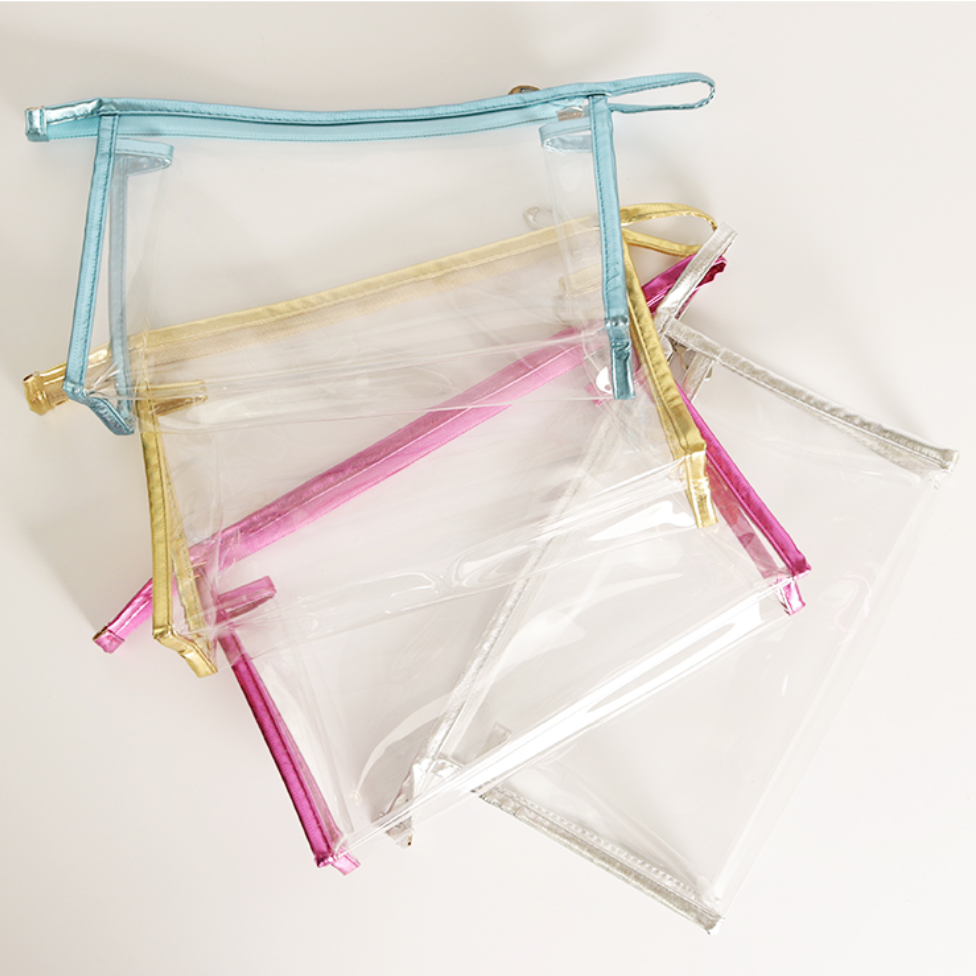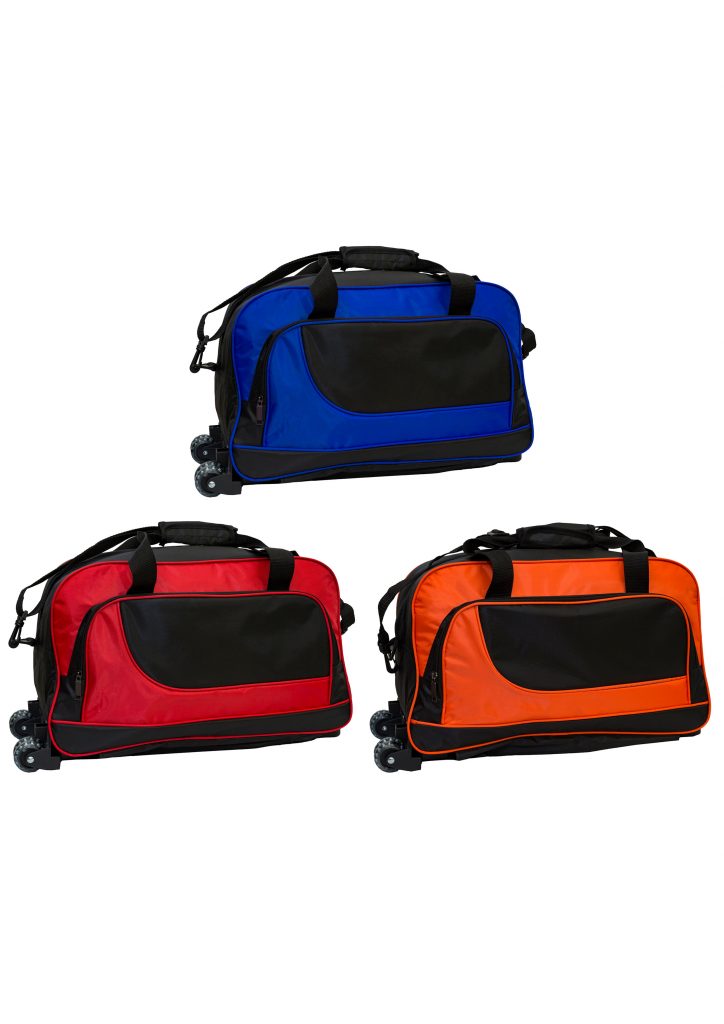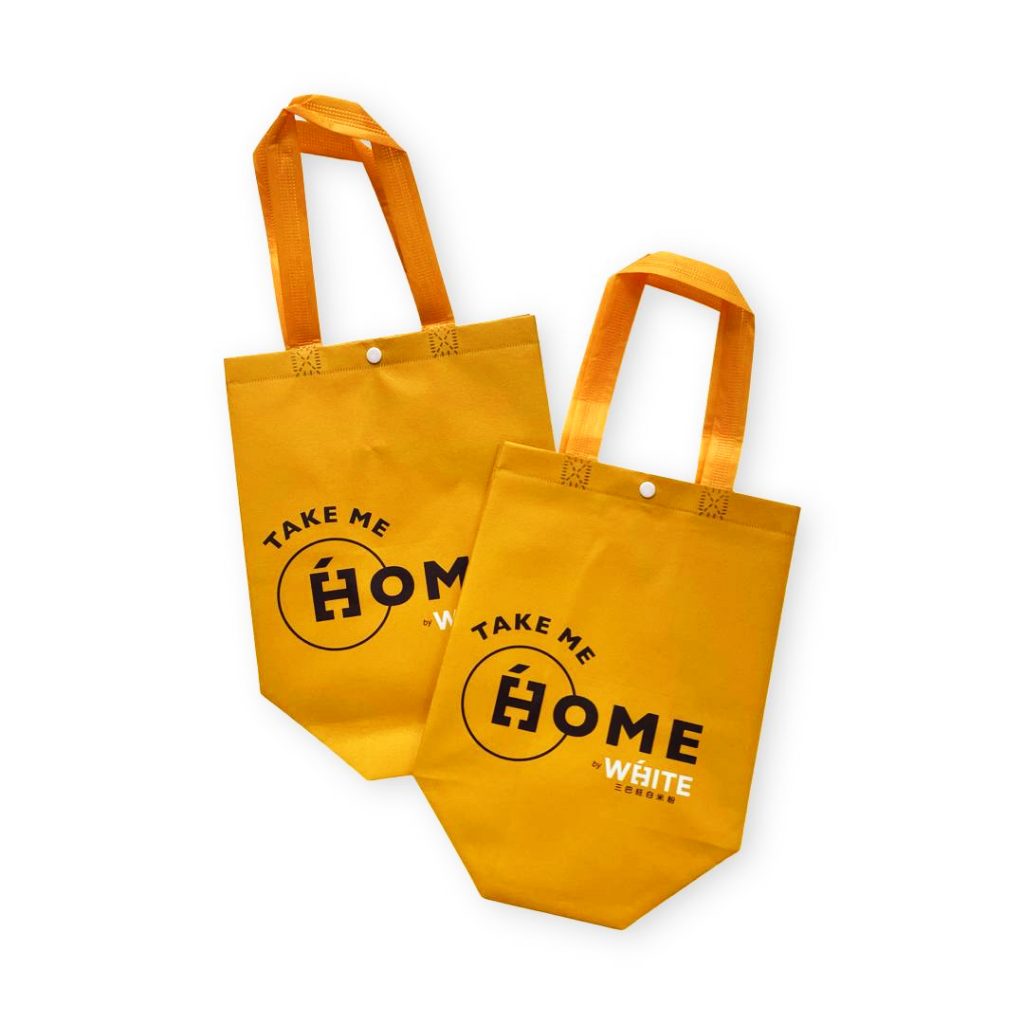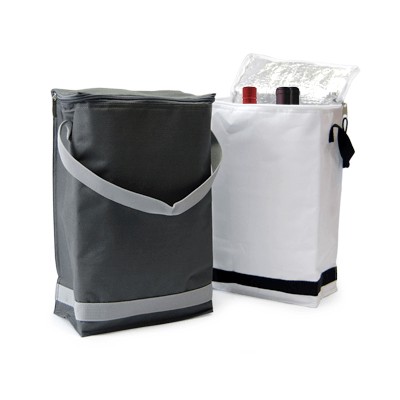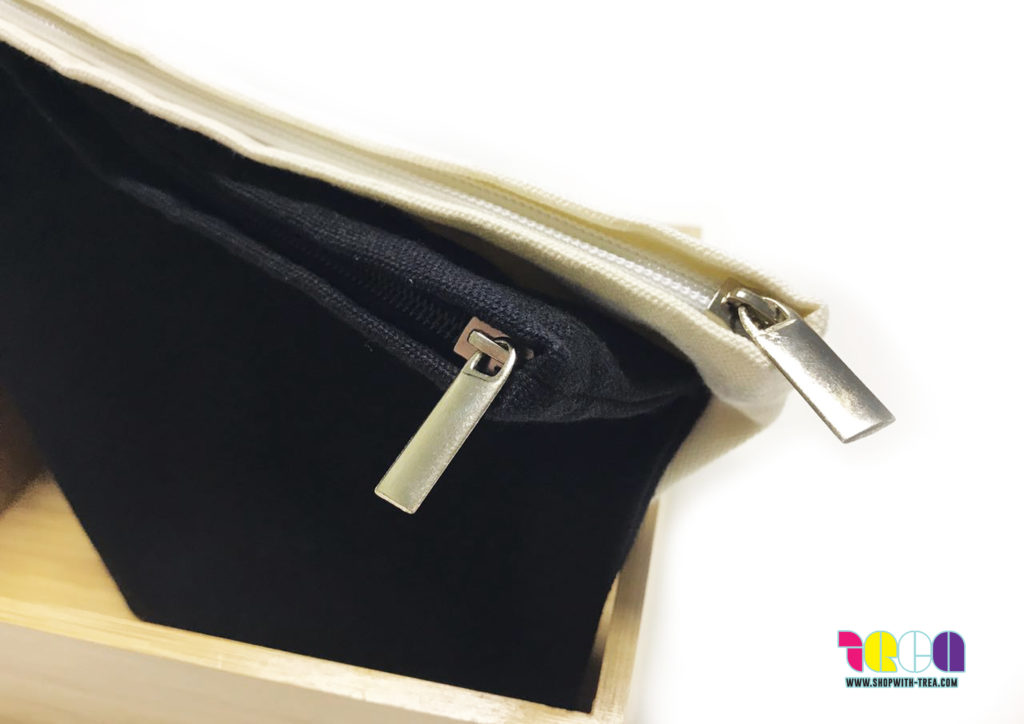Home > Customised Tote Bag, Custom Bag Printing in Singapore
CUSTOMISED TOTE BAG PRINTING
With 10 years of experience, we’re here to Custom Made Bag That Represents Your Brand!
Whether you notice it or not, customised tote bag have been around us for a very long time. In terms of customised products, they rank as one of the most popular in Singapore. You see them at charity events, corporate functions and school carnivals. They are not only useful but are also very cost efficient marketing tools. TREA provides a wide selection of tote bags, with different materials and printing methods for you to choose from. Read on further to find out more about the different printing methods available for your desired customised tote bag!
Apart from printing on existing tote bag or bag designs, what makes TREA difference from other vendors is that we provide FULL CUSTOM FROM SCRATCH services on our bag! We are able to customise your bag with your given dimension, material, color, features requirement and print design. Best of all, the minimum order quantity (MOQ) to customise own bag from scratch only starts from 100pc!
Here are some of the unique custom from scratch canvas bag that we have done for our client!
- Minimum Order Quantity (MOQ) from 100pc!
- Quick lead time as fast as 4 weeks!
- Any dimension, colors, features & design can be customised!
Drop us an email at [email protected] if you want to customise your very own unique bag from scratch!
Ready Stock Customisable Bags We Offer!
Fred not if you are not ready to tailor made your customised tote bag. Here are the existing bags style categories that are available for you to print your logo or design directly, MOQ from 30pc only! Click into individual category to view more product options!
5 Print Methods To Customise Tote Bag Of Your Brand
There are many ways to make a custom printed tote bag look attractive. From choosing the colors of a bag, to deciding the placement and size of the design artwork that you want to print. However, did you know that the way you print can make a very big difference too? Choosing the right printing method for your customised tote bag can make the difference between an average looking tote bag and one that says “All eyes on me.”.
When it comes to the marketing aspect of custom printed tote bags and their effectiveness, they are only as useful as they look. So why not score high on the looks department and reap all the benefits later? Here are 5 printing methods for your consideration in making the one special customised tote bag that people would love to receive!
1. Silkscreen Printing
Material: All textile material, cotton canvas, non woven, polyester etc
Colours: All colors
The silkscreen print method is a very common method for customised tote bag printing. It is applicable to print on all fabric materials such as cotton canvas, polyester and non-woven to name a few. Silkscreen printing is also able to print on all colours. Hence, making it a versatile printing method amongst the others. However, silkscreen printing also have its own limitation. Here are a few pointers that you should know about this particular print method before using it for a customised tote bag.
The Pros of Silkscreen Printing
- Cheaper as the quantity increase
- Accurate print color according to Pantone code
- Resilient to wear and tear
- Applicable on any fabric material
The Cons of Silkscreen Printing
- Limited by number of colours in the design
- Design with solid colour only
- Not suitable for too detailed design
As aforementioned, silkscreen printing can be use on all colored fabrics, which can be a challenge for other printing methods. This method is also able to print on all textile fabric materials.
Silkscreen printing general costs cheaper than other print methods when order in larger quantity. It is very economical for bulk purchasing in large orders. An example are printing of non woven bags that are frequently purchased for giveaways at events or campaigns. Adding together the low cost for non woven material and silkscreen printing, the overall cost for a single bag would easily cost less than a dollar when you order them in bulk quantities. If you are trying to manage your budget with a thicker bag (canvas) bulk order, silkscreen printing can also help you bring the overall price down.
This image shows silkscreen printing done on customised non woven bag for School Of Health Sciences during for Ngee Ann Poly’s Event. It is being used to carry brochures and booklets for the convenience of the attendees. In terms of printing, pantone colours that match your corporate logo, silkscreen printing is the only available method that can do that accurately. With other print methods, some colors may turn out differently when printed physically as compared to their digital mockups.
Another image shows silkscreen printing done on our custom canvas drawstring pouch for SATS Catering Family Day 2017. The brand color of SATS was printed accurately with the use of Pantone code. This custom pouch was being used as carrier for bottle drink and goodies during the event.
Some creative designs may require full surface printing which generally costs a lot more. However, depending on the design, silkscreen printing may just be able to do the job for you at a cost efficient price. Once again, highlighting the benefits of this conventional printing method.
With all the good things said, silkscreen printing also has its limitations. This print method is only advisable to print up to 4 colours on a particular design. Depending on design, it may be able to print overlapping colour designs but it cannot print colors in gradient.
Silkscreen printing is also not able to pick up tiny details in a design. The result will come out smudged due to the ink not being able to be precisely printed onto the textile fabric. This means that silkscreen printing is only most effective in 2D designs and not too precise designs or images.
A MOQ is also needed for silkscreen printing with 30 pieces per order for ready stock and 100pc for customised bags. It is also more expensive to print in low quantity and are charged by colors.
Here is an example of a customised zip pouch with different print outcome using 2 different print method: silkscreen printing and heat transfer printing. The details on the lips wasn’t able to be printed out whereby heat transfer could do the job.
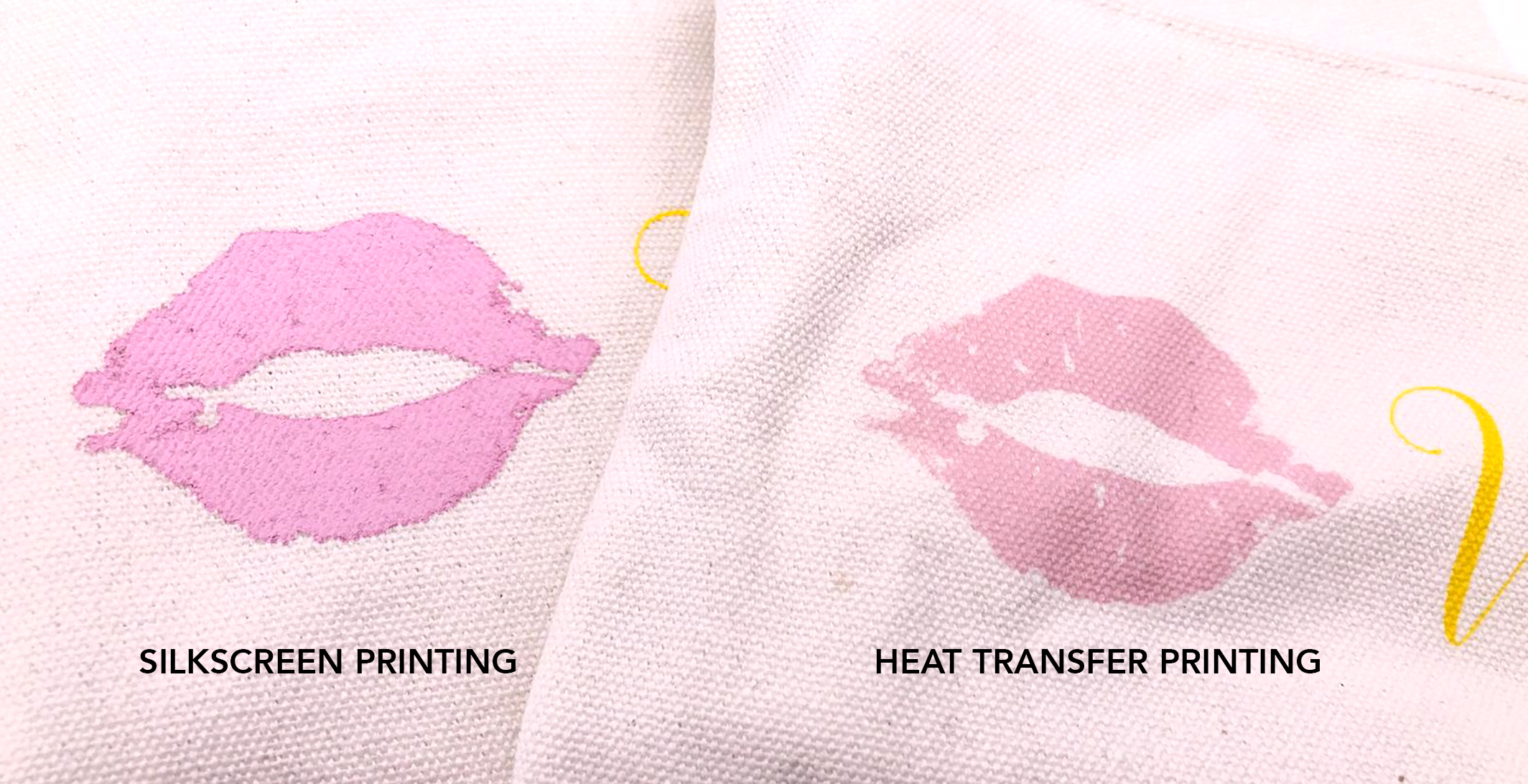
2. Direct To Garment (DTG) Printing
Material: Cotton canvas only
Colours: White, half bleached or natural cream color
DTG printing is another popular print method that can be used to not only print graphic designs but also photography images. However, It is only applicable to print on white, half bleached or natural cream colour, as well as cotton material only. Here are some notes that you might wish to take while choosing this particular printing method for your customised tote bag.
The Pros of DTG Printing
- Not limited to print any design
- Smooth and “no hand feel” print outcome
- Supports edge to edge/ full surface printing
The Cons of DTG Printing
- Limited to cotton canvas material only
- Limited to white, half bleached or natural canvas colour
- Less vibrancy in colour and vibrancy
A big attribute of DTG printing is its ability to print all types of design and imagery. It is able to print full color, different color gradients, overlapping colors and photography images. Accuracy on printing of precise details and borderless outcome could also be achieved with DTG printing. This is made possible because DTG printing prints just like how we print on papers using an inkjet printer. DTG printer will run directly onto the garment which are absorbed by the fibers. Hence, allowing the cotton fabric material to retain its texture even after printing, gives it a “no hand feel” print outcome.
As such, DTG print method supports full surface edge to edge bag printing perfectly. Full surface printing takes place when either sides of a bag is printed first before they are stitched together to form the bag. Additionally, DTG printing is also able to print without borders. The images shows a full surface DTG printed pouch and bag.
The downside of DTG printing, however, lies in its color quality and limited fabric colour to choose from. DTG printing can only be done on white, half bleached or natural cream colour fabric. The color difference between an actual design or image tend to vary more from the customised bag, as compared to other print methods. Printed designs or images done with DTG printing also could look less vibrant. When printing on a thicker canvas bag material, its design/image resolution might be weaker and you may end up getting a customised tote bag or zipper pouch that is not as attractive as you had hope for.
3. Dye Sublimation Printing
Material: Polyester canvas only
Colours: White only
While bearing similarities to DTG printing, dye sublimation print method stands as its own printing method. This print method can only be done on an full white polyester canvas fabric material which must not have any cotton content.
The Pros of Dye Sublimation Printing
- Not limited to print any design
- Smooth and “no hand feel” print outcome
- Supports edge to edge/ full surface printing
The Cons of Dye Sublimation Printing
- Limited to polyester canvas material
- Limited to white bag only
- Less accuracy in colour, vibrancy and resolution
Dye sublimation is able to print in full color, different color gradients, overlapping colors and photography images. Due to its polyester fabric material attributes, the texture is softer and smoother. Polyester canvas is also very receptive to absorbing ink into the fabric. This print method uses a heat press process to transfer printed design onto the fabric material. As such, little precise details and texts do not have very good resolution and appear to be less sharp. Similar to DTG printing, there is also a larger color difference variance.
4. Heat Transfer Printing
Material: All textile material, cotton canvas, non woven, polyester etc
Colours: All colors
When it comes to printing sharp and vibrant photography images, none of the above print methods does it better than heat transfer printing. Furthermore, heat transfer printing can be done on all fabric materials and colors. We discuss the ups and downs of using this print method for your intended design.
The Pros of Heat Transfer Printing
- Not limited to print any design
- Supports low quantity order
- Higher accuracy in colour, vibrancy and resolution
The Cons of Heat Transfer Printing
- Printing comes with border
- Prominent print surface texture
- Unable to support full surface/ edge to edge printing
Heat transfer printing uses heat as a medium to transfer an image from print material to a canvas bag. Due to this reason, the printing image is able to retain optimal resemblance to its digital mockup. This means that the colour variance is very minimal and precise details are captured and imprinted onto the customised tote bag a lot more accurately. You will be able to print in full colour, different colour gradients and overlapping colours. Heat transfer printing can also be done in smaller quantities.
There is a possibility that you may experience cracking or peeling of the heat transferred image layer after a long period of time. This print method generally requires a border as an outline to be printed along with the intended design. This border, however, will be adjusted to closely match the fabric color. In situations where the edges of the design are of a same solid color, the borders can be excused.
On the other hand, heat transfer is also allowed to be done without borders, which also be recognised as “transparent border”. However it require a longer production time as they are done by our suppliers in China. This method is not highly recommended unless special request due to it is lower in quality.
Heat transfer printing is also not recommended for full surface printing as the printed design may tear at the parts where the bags are being sewn together. The method of printing is also more expensive due to the cost of printing material and complicated procedures. The printed design on the bag will give a very prominent texture as well which might affect the aesthetic appearance of the customised tote bag.
5. Embroidery Printing
Material: Cotton canvas
Colours: All colors
This method of stitching your design work is applicable to cotton canvas tote bag only, with thin to moderate thickness.
The Pros of Embroidery
- Looks presentable and classy
- Resilient to wear and tear
The Cons of Embroidery
- Limited by number of colours in the design
- Design with solid colour only
- Not suitable for too detailed design
As the design logo is being embroidered onto a bag, it is the most lasting out of all printing methods. It is less likely to be damaged and is more resilient to wear and tear even after a long period of time. Embroidered logos are classy and leaves an impression of professionalism. As it is a less common print method to be used on a tote bag.
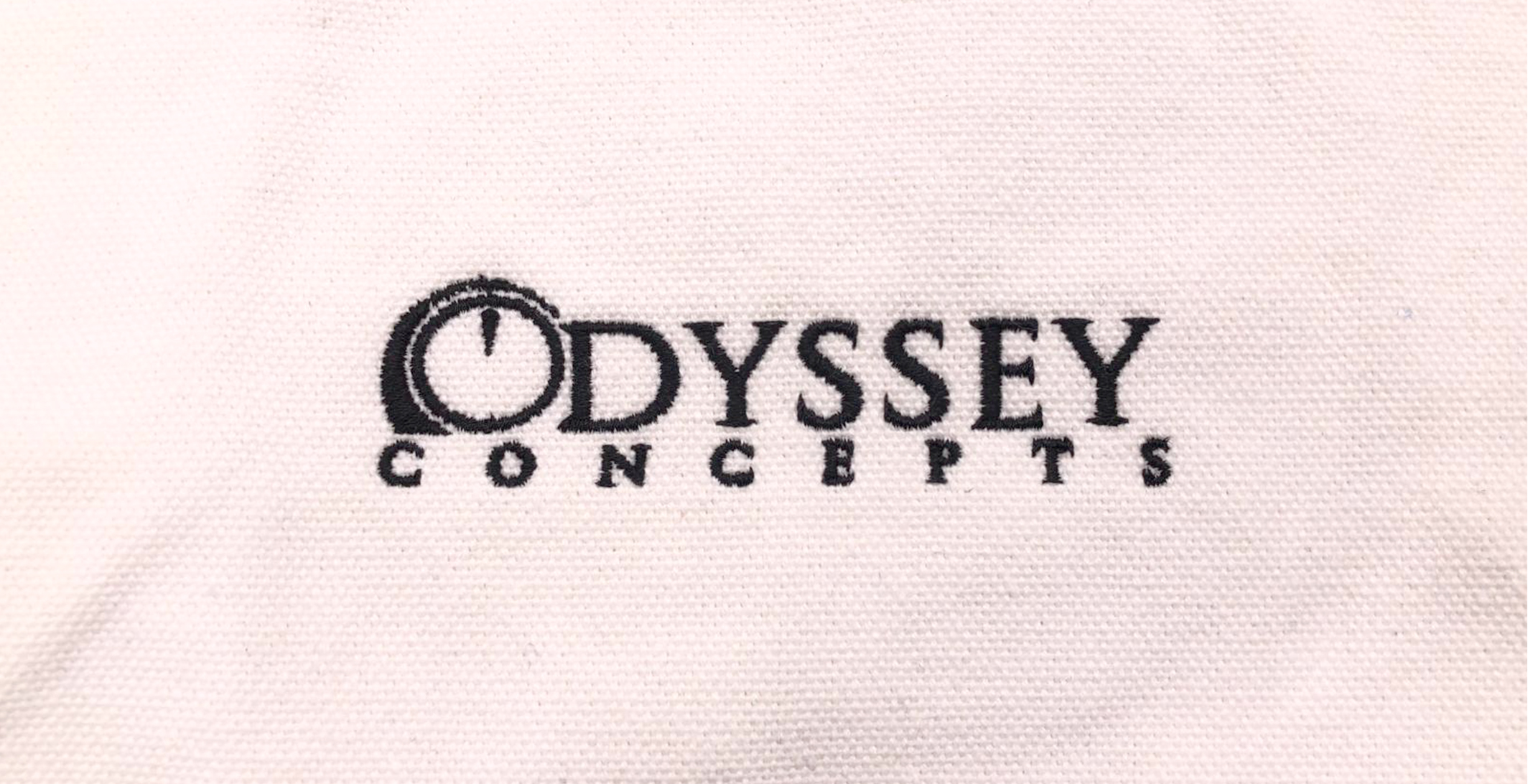
Even though embroidery could be done in multiple but limited solid colors, it is unable to replicate any color gradient or overlapping colors. The size and placement of the embroidered design is also limited by the product size and shape. Colors of the embroidered logo will also have to be chosen from the available color threads as they are fixed. Pantone colors are not available. Embroidery generally costs more to produce and require a MOQ of 30. Low quantity orders are allowed but they cost more and is something that we advise against.
What Our Clients Say?
A customer’s feedback is the truest gauge of how well or badly a company is doing. Throughout the years, TREA has garnered top and truthful reviews from satisfied clients in Singapore. Our team has worked hard to go far and beyond to achieve the gold standard for printing high quality t shirts. Here are the links to read up more Google reviews left by our customers.

